Unlocking Automotive Lightweighting: A Deep Dive into the AJX931 Heat-Resistant Magnesium Alloy
This technical summary is based on the academic paper "Features and Vehicle Application of Heat Resistant Die Cast Magnesium Alloy" by Manabu MIZUTANI, Katsuhito YOSHIDA, Nozomu KAWABE, and Seiji SAIKAWA, published in SEI TECHNICAL REVIEW (2019). It has been analyzed and summarized for technical experts by CASTMAN.
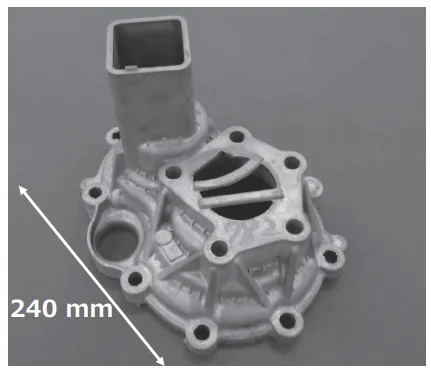

Keywords
- Primary Keyword: Heat-Resistant Magnesium Alloy
- Secondary Keywords: Die Casting, AJX931, Automotive Powertrain, Lightweighting, Creep Resistance, Bolt-Load Retention
Executive Summary
- The Challenge: Conventional magnesium alloys like AZ91 and AM60 lack the necessary creep resistance at temperatures above 120°C for use in automotive powertrain components.
- The Method: Researchers developed a new alloy, AJX931, with 9% aluminum, 1% calcium, and 3.1% strontium to form stable, heat-resistant precipitates while avoiding the problematic β-phase (Mg17Al12).
- The Key Breakthrough: The new AJX931 alloy demonstrates heat resistance comparable to RE-containing alloys, superior 0.2% yield strength, excellent castability, and improved recyclability over existing heat-resistant options.
- The Bottom Line: AJX931 presents a commercially viable, high-performance, and recyclable heat-resistant magnesium alloy that can replace heavier aluminum components in demanding automotive applications.
The Challenge: Why This Research Matters for HPDC Professionals
Magnesium is the lightest of all practical structural metals, making it a prime candidate for vehicle lightweighting. However, its application in high-temperature environments like powertrain components (oil pans, transmission cases) has been severely limited.
Standard alloys such as AZ91 and AM60, while strong at room temperature, suffer from poor heat resistance. At temperatures of 150°C, these alloys experience creep deformation, leading to the loosening of fastening bolts. This failure is caused by the β-phase (Mg17Al12) precipitates, which noticeably decrease in strength above 120°C.
Previous attempts to solve this involved reducing aluminum content and adding elements like rare earths (REs), calcium (Ca), or strontium (Sr). While this improved heat resistance, it introduced significant drawbacks, including poor castability, difficult recycling (especially with REs), and compromised corrosion resistance. The industry needed a new alloy that could provide high-temperature strength without sacrificing these critical manufacturing and lifecycle properties.
The Approach: Unpacking the Methodology
To overcome the limitations of existing alloys, researchers from Sumitomo Electric Industries and the University of Toyama designed a novel alloy composition, designated AJX931.
Alloy Design: The core strategy was to maintain a high aluminum content (9.0%) to ensure excellent castability, corrosion resistance, and room temperature strength. To counteract the formation of the heat-sensitive β-phase, researchers introduced a combination of strontium (3.1%) and calcium (1.0%). These elements preferentially form stable, heat-resistant compounds with aluminum (Al2Sr, Al4Sr, and (Mg,Al)2Ca), effectively preventing the formation of the β-phase.
Evaluation Process:
- Sample Preparation: Evaluation samples of AJX931 and three existing heat-resistant alloys—AS31 (Mg-Al-Si), AE44 (Mg-Al-RE), and MRI153M (Mg-Al-Ca-Sr)—were produced using a 650-ton cold chamber die-casting machine.
- Testing: The die-cast samples were subjected to a battery of tests to evaluate key performance characteristics:
- Heat Resistance: Bolt-load retention (BLR) was measured after holding M10 bolted assemblies at 150°C for 300 hours.
- Castability: The tendency for casting cracks was evaluated and scored across 10 castings.
- Mechanical Properties: 0.2% yield strength was determined from tensile test specimens cut from the castings.
- Corrosion Resistance: Bare samples underwent a 200-hour salt spray test (JIS Z 2371).
- Recyclability: A 50 kg ingot was melted with 50 kg of scrap to evaluate changes in impurities and inclusions.
The Breakthrough: Key Findings & Data
The comprehensive evaluation revealed that the newly developed AJX931 alloy not only met but often exceeded the performance of existing heat-resistant alloys, establishing a new benchmark for the category.
Finding 1: Superior Heat Resistance and Mechanical Strength
AJX931 demonstrated exceptional performance in high-temperature and mechanical testing.
- Heat Resistance: In the bolt-load retention test, AJX931 achieved a remaining BLR of 64%, on par with the RE-containing AE44 (63%) and significantly outperforming AS31 (28%) and MRI153M (36%). As shown in Figure 6, this level of performance is 70% to 80% of that of aluminum alloys, making AJX931 a viable substitute material.
- Mechanical Strength: The alloy's high aluminum content contributed to excellent mechanical properties. As detailed in Figure 10, AJX931 exhibited the highest 0.2% yield strength at 156 MPa, surpassing AE44 (124 MPa), MRI153M (135 MPa), and AS31 (113 MPa).
Finding 2: Excellent Castability and Improved Recyclability
AJX931 overcame the critical manufacturing trade-offs that plagued previous alloys.
- Castability: The alloy showed strong resistance to casting cracks. In the evaluation shown in Figure 7, AJX931 scored an average of 2.0 points, a dramatic improvement over the crack-prone MRI153M (11.5 points) and AS31 (6.7 points). Its structure, closer to a multi-eutectic composition, provides better feedability during solidification.
- Corrosion Resistance: In a 200-hour salt spray test, AJX931 showed only slight white rust and less pitting corrosion than the favorable AE44 alloy, demonstrating its performance is at a practical level (Figure 11).
- Recyclability: By omitting rare-earth elements, AJX931 is inherently easier to recycle. Experiments showed that inclusions were more easily removed during recycling compared to AE44 (Figure 12). Furthermore, due to its calcium content, the alloy could be cast into ingots in the atmosphere without a shielding gas, unlike AE44 which showed discoloration and combustion (Figure 13).
Practical Implications for R&D and Operations
- For Process Engineers: This study suggests that AJX931's lower melting point (30-40°C lower than other heat-resistant Mg alloys) allows for a higher degree of superheat (100-110°C) when melting below 700°C. This can contribute to favorable fluidity and reduced cycle times.
- For Quality Control Teams: The data in Figure 7 of the paper illustrates the significantly lower crack susceptibility of AJX931 compared to AS31 and MRI153M. This suggests that transitioning to AJX931 could reduce scrap rates and simplify crack-related inspection criteria for complex geometries.
- For Design Engineers: The findings indicate that the high 0.2% yield strength (156 MPa) of AJX931 allows for the design of robust, lightweight components. The alloy's high bolt-load retention (64% BLR) provides confidence for its use in powertrain applications where secure fastening is critical at elevated temperatures.
Paper Details
Features and Vehicle Application of Heat Resistant Die Cast Magnesium Alloy
1. Overview:
- Title: Features and Vehicle Application of Heat Resistant Die Cast Magnesium Alloy
- Author: Manabu MIZUTANI, Katsuhito YOSHIDA, Nozomu KAWABE, and Seiji SAIKAWA
- Year of publication: 2019
- Journal/academic society of publication: SEI TECHNICAL REVIEW NUMBER 88
- Keywords: creep-resistant, heat-resistant, magnesium alloy, die casting, weight reduction
2. Abstract:
Since the successful development of the world's first AZ91 alloy sheet, which has high strength and superior corrosion resistance, we started the magnesium alloy business with the AZ91 alloy sheet used for the case body of mobile electronic devices. For application to transportation vehicle parts, however, the properties of AZ91 were not sufficient and we launched the development of new Mg alloys. Recently we have successfully developed a high-temperature creep resistant Mg alloy that can be applied to automobile powertrain components through a collaborative research with the University of Toyama. The new alloy has overcome the drawbacks of conventional creep resistant Mg alloys, such as the low castability and inferior recyclability. This paper introduces major properties of the developed alloys, which are necessary for practical applications in transportation vehicle parts.
3. Introduction:
Magnesium (Mg) is the lightest practical structural metal, with a specific gravity 2/3 that of aluminum (Al) and 1/4 that of iron (Fe). While typical Mg alloys like AZ91D and AM60 are used in automotive parts like steering wheel cores, their application is limited by low workability, necessitating die casting. A key challenge is expanding Mg alloy use to heavy powertrain components to achieve substantial weight reduction. These components require heat resistance, but the heat resistance of AZ91 and AM60 is poor. At 150°C, these alloys experience creep deformation, causing bolt loosening, which makes them unsuitable. This poor performance is due to β-phase (Mg17Al12) precipitates weakening above 120°C. Previous solutions involved reducing Al and adding Si, rare-earth elements (REs), Ca, or Sr to form more stable precipitates, but these solutions came with challenges like poor castability and recycling difficulties.
4. Summary of the study:
Background of the research topic:
There is a strong demand in the automotive industry to use lightweight magnesium alloys for heavy powertrain components to reduce vehicle weight. However, conventional Mg alloys lack the required heat and creep resistance for these applications.
Status of previous research:
Existing heat-resistant Mg alloys have been developed by adding elements like REs, Ca, and Sr, but these alloys suffer from compromised castability, corrosion resistance, and/or recyclability, hindering their widespread adoption.
Purpose of the study:
To develop a new heat-resistant magnesium alloy that overcomes the drawbacks of conventional alloys, offering a superior balance of heat resistance, castability, mechanical strength, corrosion resistance, and recyclability for practical use in transportation vehicle parts.
Core study:
The study focuses on the design, die-casting, and comprehensive evaluation of a new Mg-Al-Ca-Sr alloy, named AJX931. Its properties are systematically compared against three existing heat-resistant alloys (AS31, AE44, MRI153M) across key performance metrics including heat resistance (bolt-load retention), castability (cracking), mechanical strength, corrosion, and recyclability.
5. Research Methodology
Research Design:
A comparative study was designed to evaluate the properties of the newly developed AJX931 alloy against existing commercial heat-resistant magnesium alloys. The alloys chosen for comparison were AS31 (Mg-Al-Si), AE44 (Mg-Al-RE), and MRI153M (Mg-Al-Ca-Sr).
Data Collection and Analysis Methods:
All alloy samples were prepared using a 650-ton cold chamber die-casting machine to ensure consistent and industrially relevant conditions. Data was collected through:
- Microstructural Analysis: SEM, FE-SEM, EDX, and XRD were used to analyze the metallic structure and identify precipitated phases.
- Mechanical Testing: Bolt-load retention was measured using strain-gage equipped bolts after 300 hours at 150°C. Tensile tests were conducted to determine 0.2% yield strength.
- Physical Testing: Castability was assessed by visually inspecting 10 castings for cracks and assigning a quantitative rating. Corrosion was evaluated via a 200-hour salt spray test. Recyclability was tested by re-melting scrap and analyzing for inclusions and impurities.
Research Topics and Scope:
The research scope covers the alloy design, die-casting, and characterization of the AJX931 alloy. The study evaluates its heat resistance, castability, mechanical properties, corrosion resistance, and basic recyclability, positioning it for application in automotive powertrain components.
6. Key Results:
Key Results:
- The new alloy, AJX931, is composed of Mg, 9.0% Al, 1.0% Ca, and 3.1% Sr. Its microstructure consists of heat-resistant Al-Sr and Al-Ca compounds, with no evidence of the undesirable β-phase (Mg17Al12).
- AJX931 demonstrated superior heat resistance, with a bolt-load retention (BLR) of 64% at 150°C, comparable to the RE-containing AE44 (63%) and far exceeding AS31 (28%).
- The alloy exhibited excellent castability, with a crack evaluation score of 2.0 points, significantly better than AS31 (6.7) and MRI153M (11.5).
- AJX931 achieved the highest 0.2% yield strength of all alloys tested, at 156 MPa.
- The alloy showed practical corrosion resistance, performing better than AE44 in a 200-hour salt spray test.
- By omitting RE elements, AJX931 offers superior recyclability, showing fewer inclusions after re-melting and better handling in a molten state without a shielding gas.
Figure Name List:
- Fig. 1. Die-cast sample shape
- Fig. 2. Microstructure of AJX931 die casting
- Fig. 3. FE-SEM-based EDX analysis of AJX931 die casting
- Fig. 4. XRD measurement of AJX931 die casting
- Fig. 5. Measurement method for remaining axial force
- Fig. 6. BLR of conventional heat-resistant alloys and newly developed alloy
- Fig. 7. Evaluation of castability for die casting (casting cracks)
- Fig. 8. Microstructures of die-cast alloys
- Fig. 9. Test specimen cut-out area and shape of tensile test specimen
- Fig. 10. 0.2% yield strength comparison of existing heat-resistant alloys and newly developed alloy
- Fig. 11. Exterior of samples subjected to 200 h salt spray testing
- Fig. 12. Evaluation results for amount of inclusions
- Fig. 13. Exterior of ingots cast from smelted molten metal
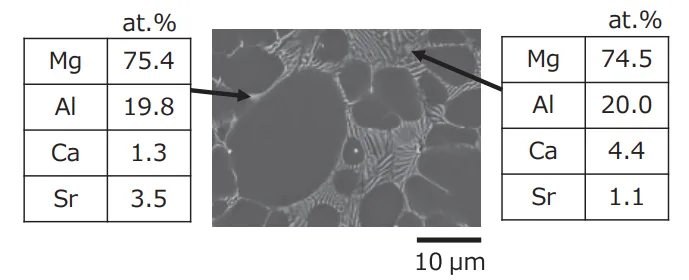
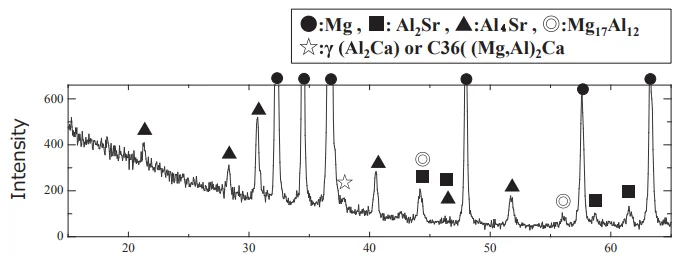
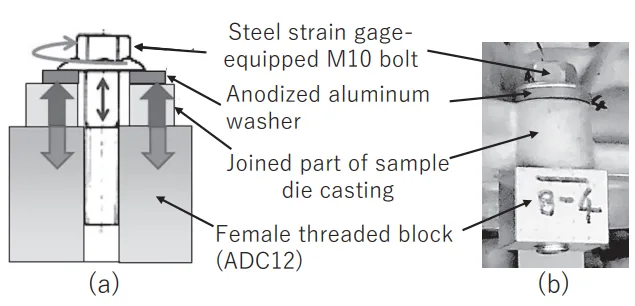
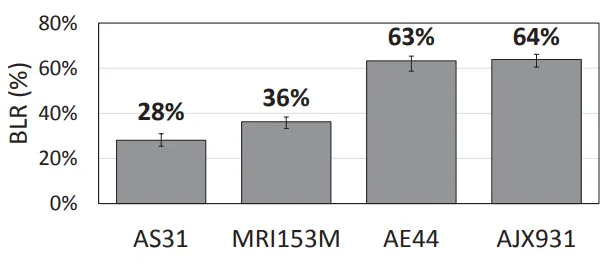
7. Conclusion:
Sumitomo Electric has successfully developed an innovative heat-resistant magnesium alloy, AJX931. Compared with existing heat-resistant magnesium alloys, AJX931 has highly heat-resistant characteristics, excellent castability, corrosion resistance, and material strength. Moreover, the newly developed alloy contains no RE as a constituent element and is therefore considered to facilitate recycling. AJX931 is viewed as a solution to concerns about conventional heat-resistant magnesium alloys, with expectations for its use in transportation vehicle parts.
8. References:
- (1) S. Kamado, Y. Kojima, Materia Japan, 38 (1999) 4
- (2) S. Saikawa, Journal of Japan Institute of Light Metals, 60 (2010) 11
- (3) S. Takeda, Materia Japan, 53 (2014) 12
- (4) I. Nakatsugawa, Materia Japan, 38 (1999) 4
- (5) H. Kawabata, N. Nishino, T. Aikawa, K. Otake, Y. Genma, Journal of Japan, 60 (2010) 11
- (6) The Japan Magnesium Association web site (2013)
Expert Q&A: Your Top Questions Answered
Q1: Why was a high aluminum content of 9% chosen for AJX931, when high Al is known to reduce heat resistance in conventional Mg alloys?
A1: The designers made a strategic choice to use 9% aluminum as a prerequisite to ensure excellent castability, corrosion resistance, and room-temperature strength, which are known benefits of higher Al content. The key innovation was to counteract the negative effect on heat resistance (i.e., the formation of the β-phase) by adding 3% strontium and 1% calcium. These elements bond with the aluminum to form stable, heat-resistant precipitates, preventing the β-phase from forming and thus achieving high heat resistance.
Q2: The paper states AJX931's heat resistance is "70% to 80% of aluminum alloys." How was this conclusion reached and what does it mean for practical applications?
A2: This conclusion is based on the bolt-load retention (BLR) data in Figure 6. AJX931 achieved a 64% BLR. The paper notes that aluminum alloys typically reach BLR rates of 80% to 90% under similar conditions. Therefore, 64% is approximately 70-80% of that range. For practical applications, this means AJX931 is a strong candidate to serve as a material substitute for aluminum alloys in powertrain components, requiring relatively minor engineering changes compared to substitutions with lower-performing Mg alloys.
Q3: What is the specific mechanism behind AJX931's superior castability compared to AS31 and MRI153M?
A3: The paper infers that AJX931's superior castability is due to its microstructure. As seen in Figure 8, AJX931, along with the other low-crack alloy AE44, has a larger amount of eutectic precipitates compared to the more crack-prone AS31 and MRI153M. This structure, which is closer to a multi-eutectic composition, improves feedability during solidification, reducing the likelihood of solidification contraction cracks.
Q4: The paper emphasizes that AJX931 does not contain rare-earth (RE) elements. What makes RE elements so problematic for recycling?
A4: According to the paper, REs are highly active and readily form stable oxides by reacting with oxygen in the atmosphere. When recycling an alloy containing REs, it is necessary to use an expensive, special, purpose-prepared flux designed specifically for RE-added alloys. This adds significant cost and complexity to the recycling process, making RE-free alloys like AJX931 much more attractive from a lifecycle perspective.
Q5: How does the addition of calcium in AJX931 contribute to its improved handling and recyclability?
A5: The paper highlights two key benefits of the calcium addition. First, it forms an Al-Ca compound that contributes to the alloy's high-temperature strength. Second, and more critically for handling, the calcium provides a combustion prevention effect. As shown in Figure 13, this allowed an ingot of AJX931 to be cast in the open atmosphere without a shielding gas, whereas the RE-containing AE44 alloy showed discoloration and combustion even with a shielding gas. This makes the molten metal easier to handle and maintain in a clean state.
Conclusion: Paving the Way for Higher Quality and Productivity
The development of AJX931 addresses a critical gap in materials science: the need for a high-performance, cost-effective, and manufacturable Heat-Resistant Magnesium Alloy. By overcoming the traditional trade-offs between heat resistance, castability, and recyclability, this innovative alloy opens the door for broader adoption of magnesium in demanding automotive powertrain applications. Its balanced profile of high strength, excellent bolt-load retention, and superior processability provides a clear path to reducing vehicle weight without compromising performance or manufacturability.
At CASTMAN, we are committed to applying the latest industry research to help our customers achieve higher productivity and quality. If the challenges discussed in this paper align with your operational goals, contact our engineering team to explore how these principles can be implemented in your components.
Copyright Information
- This content is a summary and analysis based on the paper "Features and Vehicle Application of Heat Resistant Die Cast Magnesium Alloy" by "Manabu MIZUTANI, Katsuhito YOSHIDA, Nozomu KAWABE, and Seiji SAIKAWA".
- Source: SEI TECHNICAL REVIEW NUMBER 88 APRIL 2019
This material is for informational purposes only. Unauthorized commercial use is prohibited.
Copyright © 2025 CASTMAN. All rights reserved.